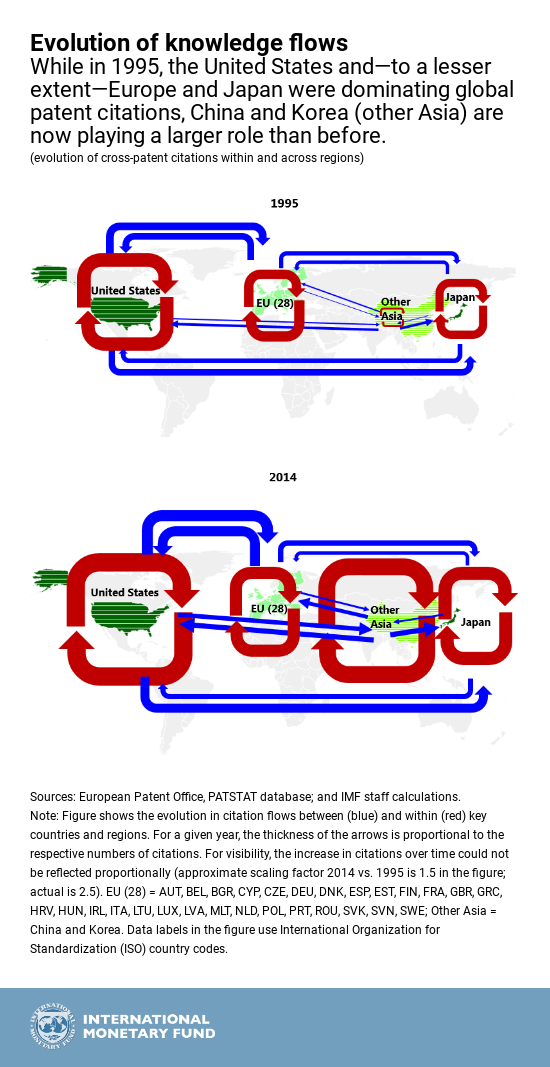July 30, 2018
Versions in عربي, Español, Français, 中文, 日本語, Português, Русский
[caption id="attachment_24155" align="alignnone" width="1024"] Young woman watches robotic fish in Gangneung, South Korea: the spread of knowledge and technology across counties has intensified because of globalization (photo: Richard Ellis/UPI/Newscom).[/caption]
Young woman watches robotic fish in Gangneung, South Korea: the spread of knowledge and technology across counties has intensified because of globalization (photo: Richard Ellis/UPI/Newscom).[/caption]
Globalization has accelerated the spread of knowledge and technology across borders. This has helped to increase productivity and potential growth in many countries and at the global level.
Technological progress is the key factor behind the improvements in incomes and standards of living. But technology tends to spread at different speeds across countries.
Our Chart of the Week shows how knowledge has flowed across countries and regions. To trace knowledge flows, a recent IMF study uses the extent to which countries cite patented innovations from the technology leaders as prior knowledge in their own patent applications.
Globalization has accelerated the spread of knowledge and technology across borders.
The chart shows that in 1995, the United States, Europe, and Japan were dominating global patent citations. In more recent years, China and Korea (depicted together as “other Asia”) have made increasingly large use of the global stock of knowledge as measured by their patent citations. Knowledge links in general have also intensified over time, both within regions (red arrows) and across regions (blue arrows).
While globalization has been criticized for its possible negative side effects, the study highlights a key benefit—it stimulates the spread of knowledge and technology. But interconnectedness per se is not enough. The assimilation of foreign knowledge and the capacity to build on it most often requires scientific and engineering know-how.
Investments in education, human capital, and domestic research and development are essential to build the capacity to absorb and efficiently use foreign knowledge. It also requires an appropriate degree of protection and respect of intellectual property rights—both domestically and internationally—to preserve the ability of innovators to recover costs while ensuring that the new knowledge supports growth globally.
Policymakers must also make certain that the positive growth benefits from globalization and technological innovation are shared widely across the population, including by ensuring that innovating firms do not exploit the newly acquired technology to gain excessive control of a market to the detriment of consumers.





